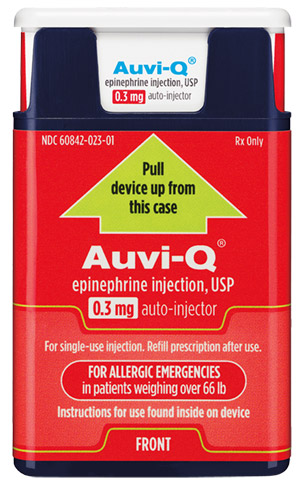The Epipen: The Symbol of American Healthcare
Originally published for Morning Sign Out at UCI on April 28, 2018
The EpiPen—a lifesaver for many people with allergies and too expensive for those who really need it. However, beyond Mylan’s price tag, the EpiPen serves as an example of what not to do when designing a healthcare product.
The EpiPen is a brand of epinephrine autoinjectors. Epinephrine, also known as adrenaline, is a hormone that activates the body’s fight or flight response. Epinephrine is mostly use in response to severe allergic reactions that cause anaphylactic shock. Epinephrine is a relatively inexpensive drug (less than $1 per milliliter), so what most drug manufacturers are marketing is the drug delivery mechanism.
The EpiPen fails on a few basic design aspects. Some are practical issues, such as the product being too large. It is about the size of an extra large sharpie marker, it doesn’t fit in pockets and is too inconvenient for children to carry around. Other failures involve the structure and logic of the design. For example, the word “pen” would denote a pen tip located at the same end as the pen cap.
However, the EpiPen does the opposite.
This might seem like a small nitpick, but this design is unintuitive and confusing to someone untrained in an emergency situation. This design flaw causes a higher rate of user error, which can be potentially life threatening.
There aren’t many because of how difficult it is to engineer a product that will reliably inject the correct dose of epinephrine quickly every time and how difficult it is to get approved by the FDA. This allows them to continue to up the price. Studies also show that the hormone epinephrine degrades quickly, making EpiPens useless after about a year, bringing in more money to Mylan as they continue to sell EpiPens at higher prices. Therefore, it is important to note other epinephrine auto-injectors that might encourage competition against Mylan.

Auvi-Q is an alternative that addresses some of the design failures of the EpiPen product. It is a small box-shaped injector with automated voice instructions, leading a user through the Auvi-Q injection process. The compact nature and audio instructions has resulted in Auvi-Q being better received by the general public, according to one survey. However, in 2015, Auvi-Q issued a recall due to concerns that the product was injecting incorrect doses. While the design was better, it was not perfect.
Another alternative to the EpiPen is Adrenaclick. Adrenaclick’s auto-injector design is very similar to EpiPen’s with the safety cap on one end and the needle on the other. The main difference is the price point. A generic Adrenaclick is a much more affordable product than the generic EpiPens that are made by Mylan. The problem is most insurances don’t cover Adrenaclick. Even with Adrenaclick at a lower price, doctors rarely think to prescribe it, and patients rarely ask for it because EpiPen is the household name. Additionally, if a prescription is issued for an EpiPen, it cannot be filled with any of EpiPen’s alternatives.
The EpiPen is exemplary of many of the problems that exist in the American healthcare system. The government is continually allowing companies like Mylan to risk the lives of the sick and swindle the poor, while also creating huge hurdles for other competitors to enter the market. Mylan can raise the price of the EpiPen again and again and consumers will have no choice but to accept it. For all of these reasons, there is no incentive in place for Mylan to develop a better quality design for the EpiPen. So, until an incentive like that is put into place, patients will have no choice but to put up with the failures in our healthcare system.